To view this content, you must be a member of the Rose City Review Patreon
Already a qualifying Patreon member? Refresh to access this content.
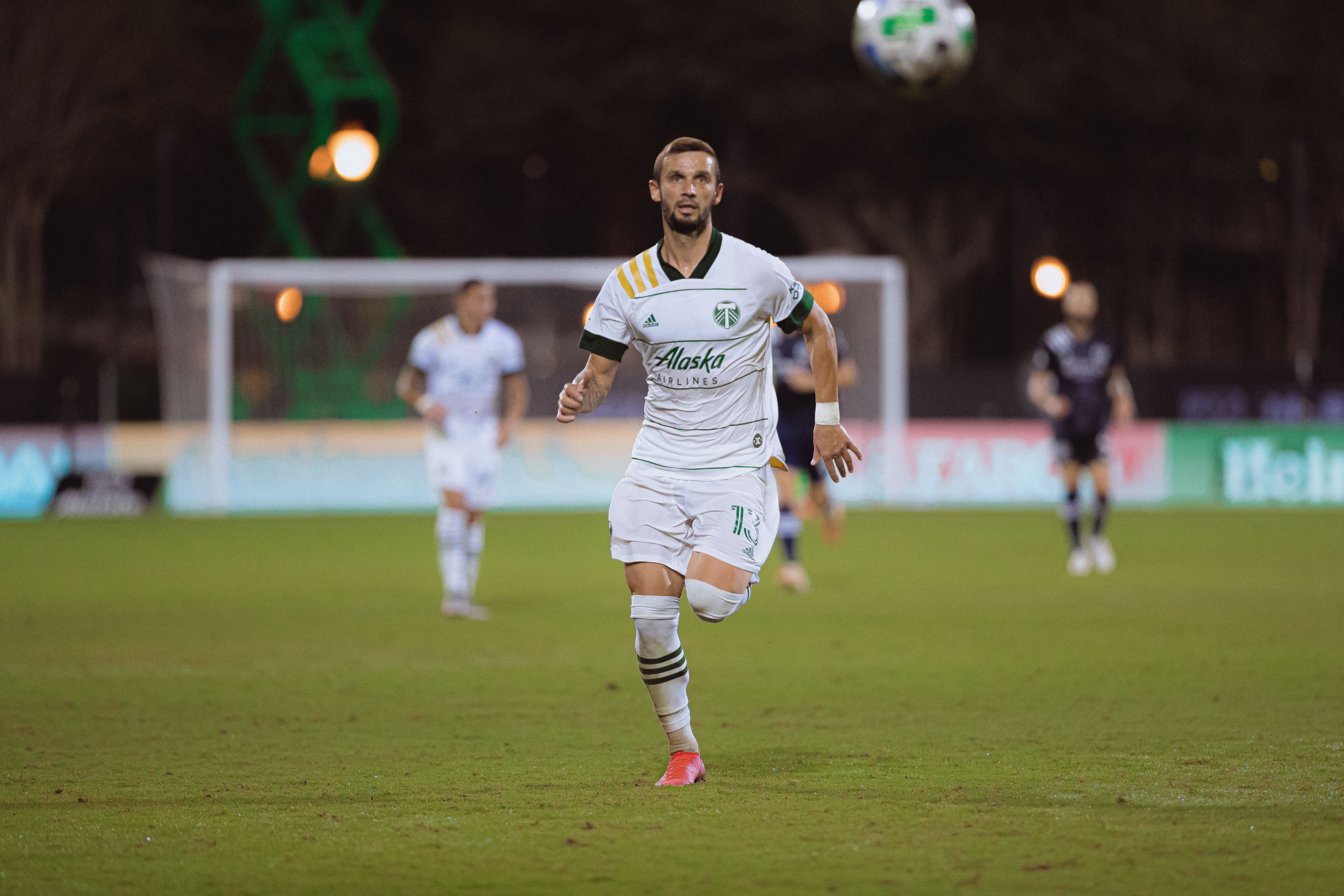
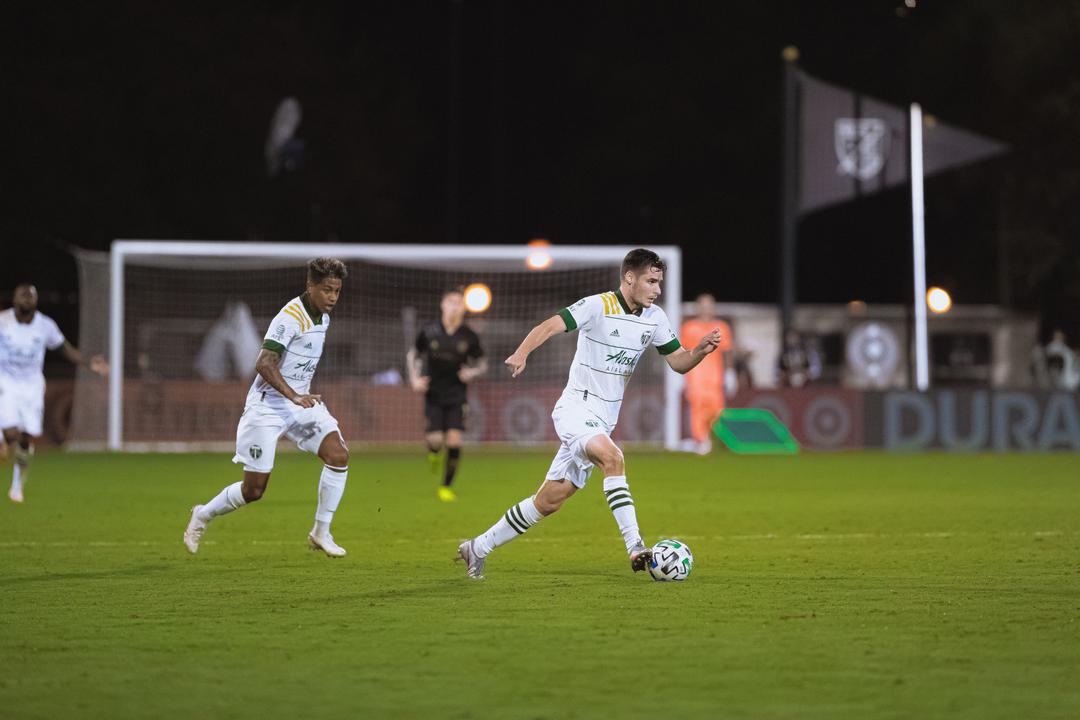
Match after match, the Portland Timbers continue to impress.
Two games in, and it seems as if there’s something new and more creative to take away from each game—something that we did not see back in March.
Against the Los Angeles Galaxy, we saw an increased sense of confidence throughout the team that manifested itself through the team’s combination play and intricate movement. In its game against Houston, we saw a team both creating and exploiting space all around the field, playing long balls with a purpose to unlock the Dynamo defense while shutting down one of Major League Soccer’s most potent attacks.
Portland did it again on Thursday night, coming in with a disciplined and compact defensive shape that managed to contain what is usually a LAFC buzzsaw to win Group F.
I don’t have much to say to open this column other than just to mention how impressive this Portland team has been over three games. The shape that the Timbers played last night required a lot of discipline (which I will go into later). I mentioned on Twitter than containing LAFC for 90 minutes is a Herculean effort––both the Dynamo and Galaxy learned that over the past week––and Portland looked defensively solid for more than 75 percent of the game. I guess what I am saying is that the Timbers look primed to make a run in this tournament and that my outlook on the team is a lot brighter than what it was when I left Providence Park back in March.
And … I guess I should mention that I had to put my bonfire-building supplies away late into the match. It’s time for the Timbers to get revenge for what was an embarrassing defeat a season ago.
The Timbers got out to a dream start against LAFC, striking first in the seventh minute.
Taking advantage of LAFC’s aggression, Portland found success in testing the opposing backline early and often. Thanks to ESPN’s aerial cam, it’s easy to see what went into Niezgoda’s opening goal, the Pole’s first as a Timber.
During this transitional moment, Portland creates a mini-overload on the right side of the field. During this, Niezgoda is sitting between the right center back and right back, waiting to pounce. The overload pulls Tristan Blackmon towards the sideline while Latif Blessing, the right back, is caught cheating a little too far up the field. This leaves Niezgoda with yards of space to run into, and he makes the finish look easy.
Conceding first is not a new trend for Bob Bradley’s men: They did it against both the Houston Dynamo and LA Galaxy. This may be looked back upon as an easy finish, but the goal proved vital for the Timbers, allowing them to weather 15 minutes of LAFC brilliance and come away with a point at the end of the game.
Yes, Bradley Wright-Phillips is not the same lethal player that carried the New York Red Bulls on his shoulders for what seems like a decade, but he is still one of the most dangerous strikers in MLS—and he proved it yet again on Thursday night.
This goal comes down to movement. Wright-Phillips sees the right side of defense pushed high and immediately makes a looping run to find that space while losing his defender, Bill Tuiloma, in the process.
Thanks to the space that his movement created, when Wright-Phillips receives the ball, he has a few touches to settle it before firing it past Clark. This is a clinical, outside-the-box finish from the Englishman, proving that age is just a number.
In his post-game media availability, head coach, Giovanni Savarese, mentioned the tired legs that his team was playing with near the end of the first half. That can easily be seen in the second goal the Timbers gave up in the course of four minutes.
Honestly, there is not too much to this goal. It’s just poor marking at the back post by Bill Tuiloma as Kaye gets by him with a quick spin move. Kudos to the Canadian for the good finish, because there’s nothing that Clark could really do there.
In a tournament with so many young players breaking out for their respective teams, Jeremy Ebobisse’s star may shine among the brightest.
For the third-consecutive game, Ebobisse found the back of the net for Portland, this time rising up and sending a towering header past Sisniega.
This is just pure grit from some of the Timbers tallest players. In a way, Tuiloma makes up for his role in the two LAFC goals as he finds the energy to rise up and win this ball in a crowded box. After a missed half-chance minutes earlier, Ebobisse makes no mistake this time as he powered the ball to the bottom right corner.
Ebobisse is making a name for himself so far this tournament. You have to think that US Men’s National Team coach, Gregg Berhalter, is watching every game in the bubble with a close eye and Ebobisse is commanding his attention.
One of my biggest takeaways from this match is the defense shape that the Timbers played in. It was a narrow 4-4-2, both horizontally and vertically, that allowed space out wide, but prevented any penetration from a LAFC lineup that knows how to exploit even a sliver of space. Playing with such a compact shape for 90 minutes against one of the league’s best sides requires insane amounts of focus and discipline. Give or take a few moments, the Timbers looked relatively drilled in this setup.
The 4-4-2 did its job for a majority of the game. As seen above, LAFC was content to pass it backwards and around the block. To exploit this system, the ball needs to be played quickly between the lines with a purpose. Because LAFC played more of a probing style early on in the game, players were able to step up and win balls in both defense and midfield. According to Opta, the Timbers made 40 CLEARANCES(!!!) over the course of the game compared to LAFC’s eight.
Below, I’m going to insert a couple of examples of what the Timbers want to do. It’s a lot of last-ditch tackling that happened time and time again throughout the game.
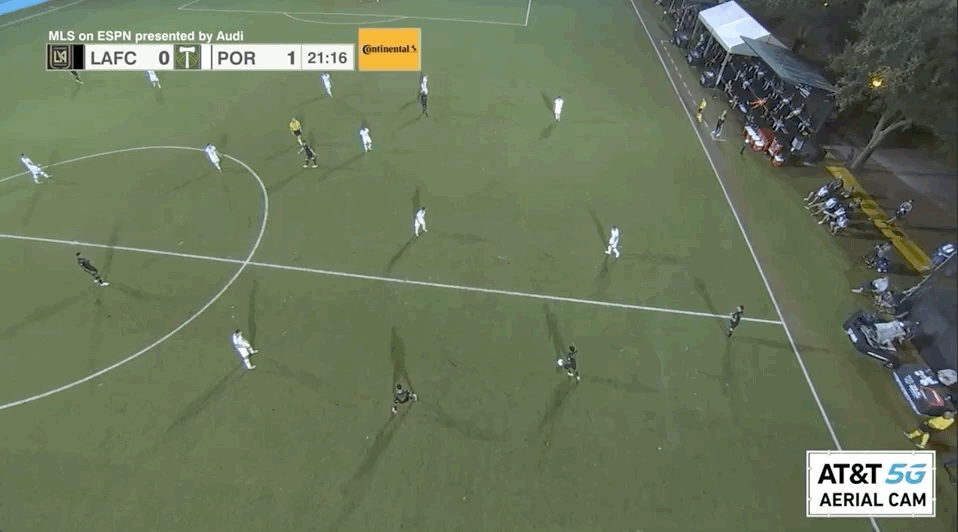
In this clip, the midfield does a good job of stepping up and preventing LAFC to get the ball in a dangerous, central area.
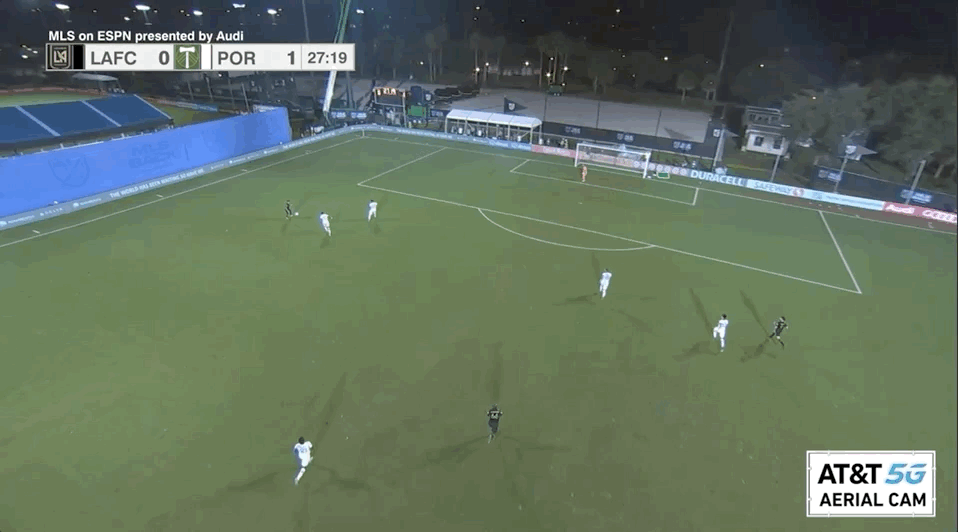
Here, the defense does a great job to cut this pass off as LAFC looks to make a direct pass towards the top of the box.
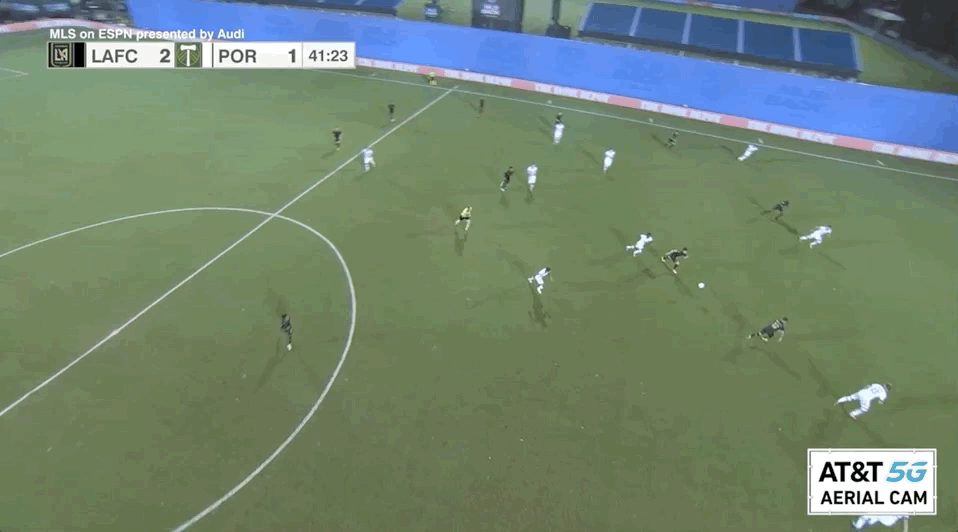
This third example is what happens when you have a defensive midfield of Diego Chará and Cristhian Paredes. Portland wanted to ensure that if LAFC tried to play centrally, they would be punished. And it worked.
There’s so much that I wanted to touch on when it comes to the defense side of the ball that I thought I should separate it into two different sections.
The defensive shape that Portland used was a very compact 4-4-2. How it defended was in a mid-block.
By playing this way, the Timbers invited LAFC to towards midfield before applying pressure. The goal of this is to create space in behind LAFC’s backline, and then take advantage of the aggression to create opportunities by running into this now-vacated area.
The Timbers were relatively successful early on but, from the 30th minute until halftime, players started to get tired, and they stopped playing into the space that they created after winning the ball. This allowed LAFC to implement a counter man-marking system, which continued to win the ball high up the field, effectively trapping Portland in its own half.
“I think what was difficult today was when we lost the ball so quickly,” Diego Chará said after the game. “When we recovered the ball, we tried to play forward, but we missed a lot of passes, and I think that made it more difficult for us to keep the ball.”
All of this is evident in the graphics below.
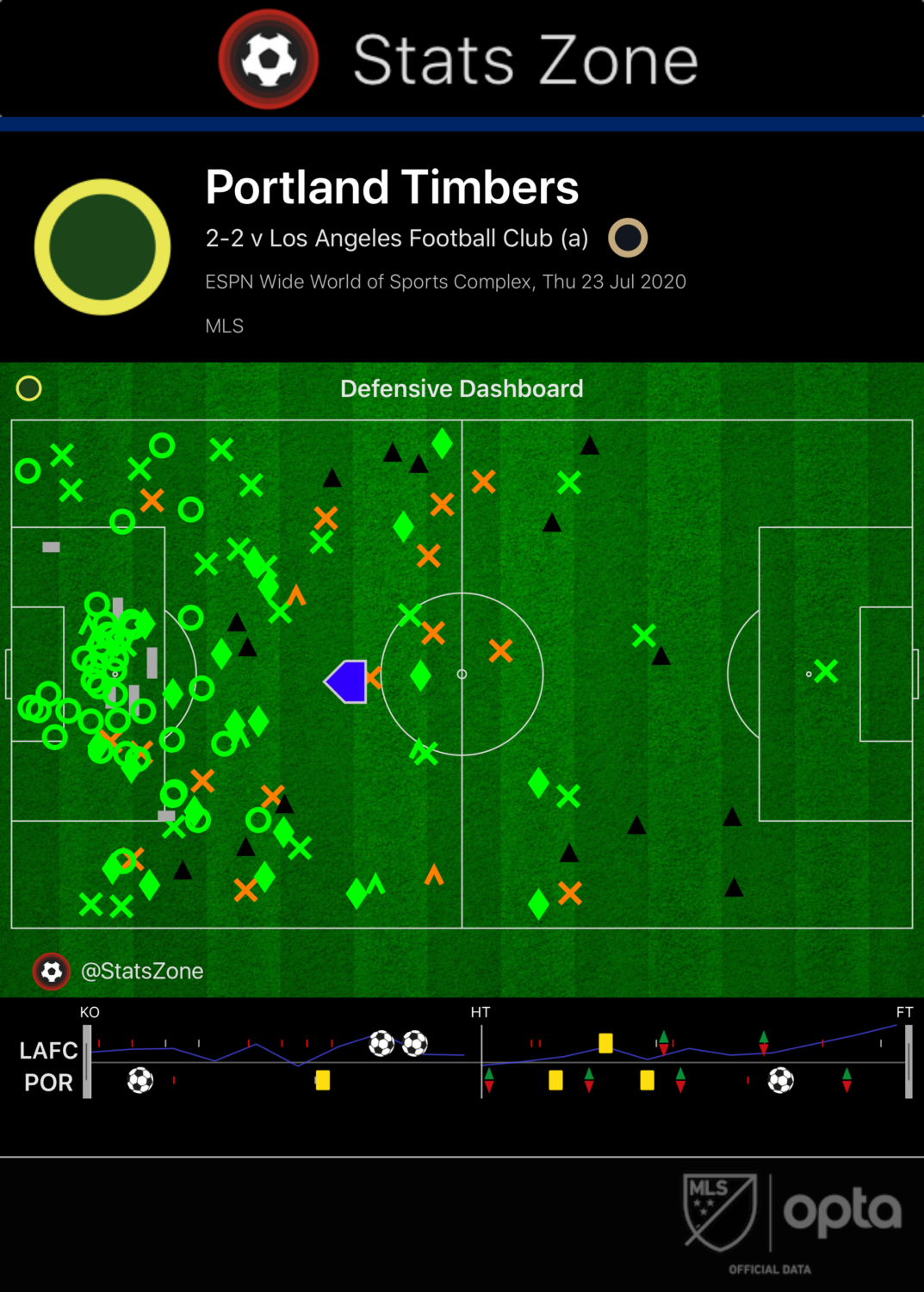
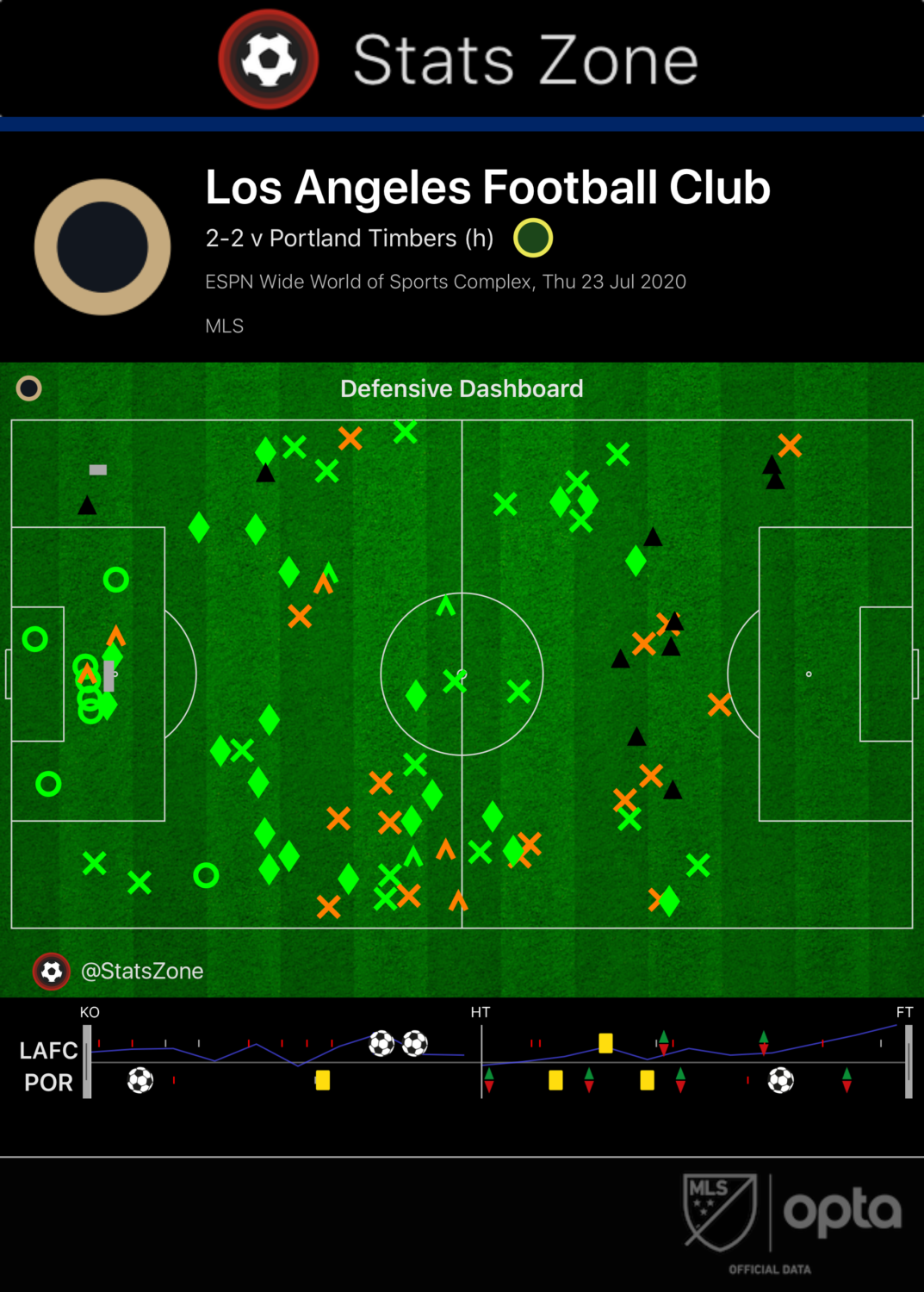
Look at where Portland defends versus where LAFC defends. Portland is playing a dangerous game of bend-but-don’t-break soccer, mostly in its own half, while LAFC is constantly trying to play on the front foot.
I can throw so many more graphics and stats such as the ones above in the article, but I don’t need to. The Timbers put on a defensive masterclass on Thursday night. Sure, it wasn’t perfect, but it’s the type of shape that every team that wants to make a deep run into a tournament needs. It’s important to remember that LAFC can exploit any defensive system and, if the Timbers could look like this defensively every game, they could go quite far in Orlando.
“The first thirty minutes we had the better of the play. We were very tight, and we didn’t allow them to be able to create much,” Savarese said when asked about LAFC’s dominant stretch. “In the last 15 minutes in the first half, they started to find the balls in between the lines; they started making better movements in those areas that we wanted to protect, and we were tired so we couldn’t close those spaces as well as we did the first thirty minutes.
“We also gave up the ball in those moments, different than the first thirty minutes when we had a lot of the ball and were smart in the way me moved it. I think that the two goals were two moments that are a little bit separated from them finding space. Yes, they had a little bit more of the ball in those minutes, they tried to create, but we defended very very well even though we had some players being tired.”
When a team presses as hard as LAFC does, the opponent usually has two options: A) Try to play through the pressure in hopes to find space to attack into; or B) Stop thinking for a few seconds and clear the ball, praying to find a teammate somewhere in the attack.
In the past, the Timbers would have taken option B, trying to recycle the ball wide and play it long, which often resulted in a quick loss of possession. But these are not the Timbers of old. Against LAFC, Portland invited the pressure and attempted to move up the field through multiple series of intricate passing and combination play. It did not always work, but when it did it was pretty.
Part of playing through a press is knowing when to commit numbers forward after winning the ball versus when to sit back. Whatever the decision is, every player needs to be on the same page to ensure that there are no gaps. Playing into the created space catches a team when they are most vulnerable at the back, but if you lose the ball, there is now plenty of vacated space for the opposing team to exploit.
Above is an example of what happens when a team gambles wrong. Remember the compact 4-4-2 block I pointed out above? This is what it looks like when caught in transition.
“It was a challenge trying to balance [attacking versus defending], understanding that we didn’t want to expose ourselves defensively, but also not wanting to sacrifice the potential for a counter-attack and getting in behind the space that they were leaving,” Jeremy Ebobisse said. “A fine line for attacking players, myself and the wingers, to balance, but ultimately I think that we had some good opportunities on the break.
“That shows a job well done to manage difficulties when they had the ball and were penetrating us and those times we were able to break out, complete a few passes, and unbalance them.”
As Ebobisse eluded to, this is a formula that teams have to get right every game. There were moments in which the Timbers were caught out, like shown above, but overall they put in a solid defensive shift and allowed their attacking talents to find a pair of goals on the other end of the field.
Now it’s onto the round of 16, where FC Cincinnati awaits. One of the surprise teams of the tournament so far, the onus will most likely be put on the Timbers to break down a compact Cincinnati side. If Portland can put together everything that they’ve shown from the group stage of this tournament, advancing to the final eight is a real possibility.
It’s time for revenge.
Video courtesy of ESPN aerial cam. Graphics courtesy of Opta and StatsZone.
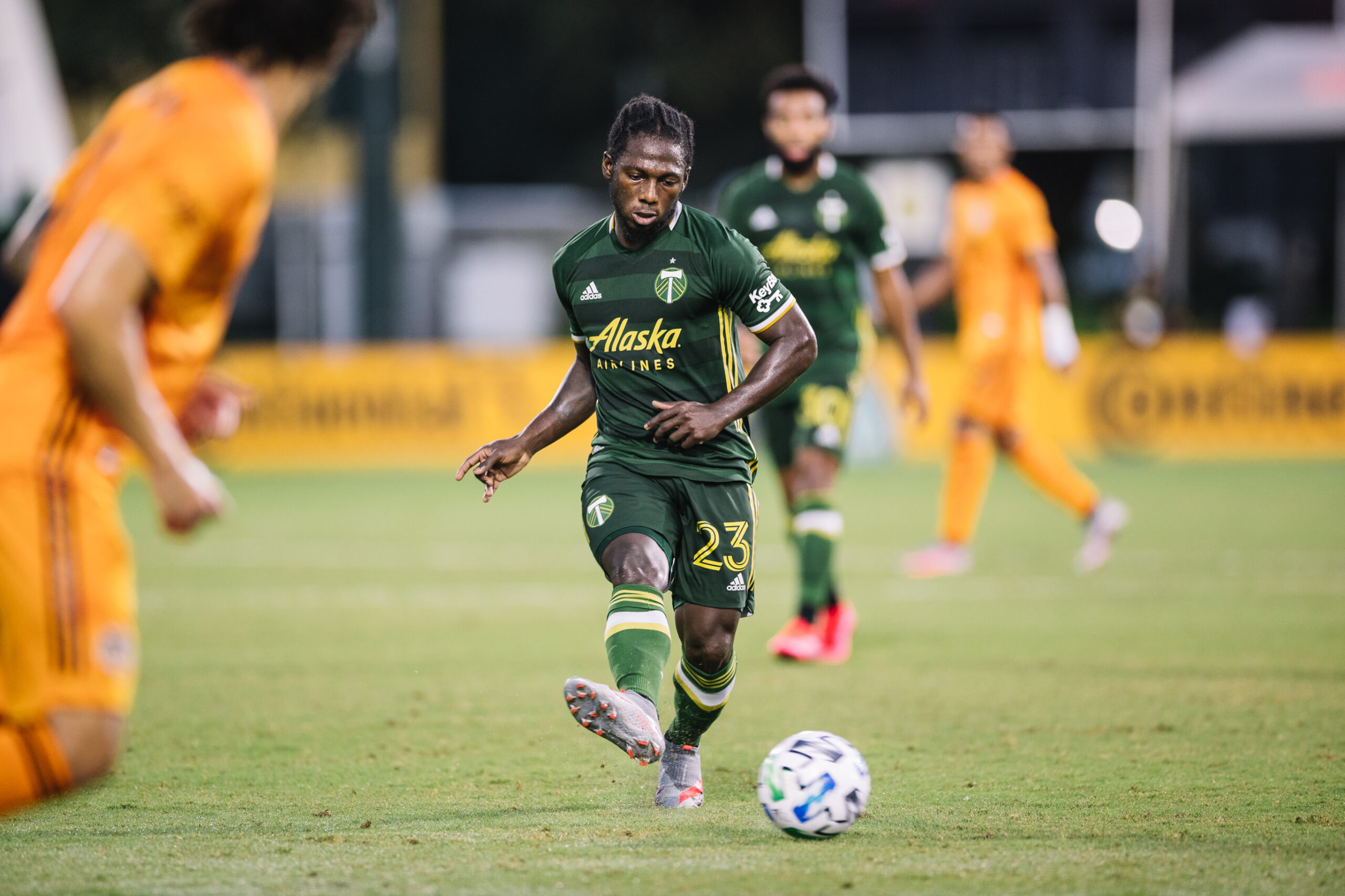
After a slow start to the 2020 Major League Soccer season, the Portland Timbers came to Orlando with something to prove. Although they’ve only played two games in the MLS is Back Tournament, it seems as if they are starting to do just that.
With a pair of 2-1 victories, the Portland Timbers are one of just four teams to take all six points from their first two games. Against the Los Angeles Galaxy, Portland came out sharp and played with a sense of confidence and precision that eluded them against Minnesota United and Nashville SC. They continued that against the Houston Dynamo, playing between lines and controlling possession against one of the most dangerous attacks in MLS.
Through strong and inspired play, the Timbers have guaranteed themselves a spot in the knockout rounds with a game to spare. But just because they know they will advance doesn’t mean they are taking the next game off or will be complacent—at least not with a game against LAFC looming.
“I think there is too much at stake [to be complacent],” head coach Giovanni Savarese told reporters via a Tuesday morning Zoom conference. “First, we want to come away with three points and finish first in the group. We’re not looking at who we’re playing after, that is why the mentality is very strong. We know that it is going to be a competitive match, and they’ve always been competitive games every time that we play LAFC.”
As Savarese mentioned, these two teams have a history in knockout competitions. In the two seasons since LAFC joined MLS, each team has knocked the other out of the US Open Cup in exciting, albeit at times contentious, games. Despite sitting on only four points after two games, an easy argument can be made that LAFC, even sans 2019 league MVP Carlos Vela, is the strongest team in this tournament.
“We have seen in the last two matches that [LAFC] have been challenged,” Savarese said. “I think this is a group that wants to prove to everyone that it is no longer dependent on Vela because many have said that, so maybe that’s one part of LAFC at the moment. We expect a very competitive match, we know that they are very difficult to play against, and we will bring a very good challenge to them like we always have.”
There is Eduard Atuesta and Latif Blessing creating havoc in midfield. Savarese explicitly pointed out the importance of limiting one-on-one opportunities from dynamic wingers Brian Rodríguez and Diego Rossi. At striker, there’s always-potent Bradley Wright-Phillips.
All of this talent available to head coach Bob Bradley is enough to give opposing coaches migraines. Staying focused for all 90 minutes is vital, but it is easier said than done against a team like LAFC.
“I think a major adjustment we need to have is finishing games a little bit stronger,” Eryk Williamson said. “We were up 2-0 both games and conceding late isn’t ideal, but it’s a clear focus point now and knowing us, LAFC’s strength is turning it on late in halves, and I think it’s something where we have to make sure that we are locked in for the 90-plus minutes.
“If we can disrupt them in any way possible and just continue to play our game with the fluidity we have up top and all the interchange to make it really difficult for them to get going.”
In all likelihood, whichever side controls the midfield will most likely win the game. Over its past two contests, Portland has made connecting play through midfield a priority. Managing the midfield means controlling possession, giving LAFC less time on the ball to pick out passes and easily dissect the Timbers’ shape. Emphasizing quick combination play also helps the Timbers create some one-on-one opportunities of their own.
“The combinations that we have practiced have been key,” Yimmi Chará said through a translator. “It is something that we have improved a lot, it’s something that we have been training on for a long time, and taking advantage of that space our opponent gives us. Up until now, it’s been one of the team’s strengths. Now, Gio Savarese wants us spatially to take advantage of those last few feet on the field so we can always take advantage of the one-on-one and come ahead.”
Another benefit of controlling midfield is that it helps shield Portland’s backline, allowing them to focus on defending deeper areas and to not be as concerned about leaving space if they have to help contain Rodríguez and Rossi out wide. If the Timbers can find some success in the midfield, they could prevent counter-attacking opportunities, limit the space LAFC desires, and control the ever-important balance between sending numbers forward in attack versus staying back.
“I know LAFC has a strong midfield and that we want to be known as one of the top midfields in the league,” Williamson said. “I think this is a good test for us as midfielders to win the midfield battle, but not only that, continue to help our backline defend Rossi and Rodríguez. It’s just a very good task for us and we’re excited for the challenge.”
According to Savarese, the Timbers will be playing with a full-strength lineup come Thursday night. He’s reported no injuries to the media, and despite fielding two full-strength lineups over the past week, he doesn’t plan to heavily rotate the lineup in anticipation for the knockout rounds.
Savarese anticipates that Bradley will play his strongest lineup, and once again emphasized the team’s collective goal of taking all three points and winning the group.
Thursday’s game projects to be one of the Timbers’ toughest challenges this season. As the press conference neared its end, Savarese put everything in perspective. The repeating message to the team has been to not take anything for granted, because just two months ago players were locked in their homes. Now, they prepare to take on last seasons Supporters’ Shield winners for the top spot in Group F.
“We enjoy being here, we’re excited to compete, we’re happy to be in a tournament,” Savarese said. “We missed this game when we were at home and now every game for us is a final.”
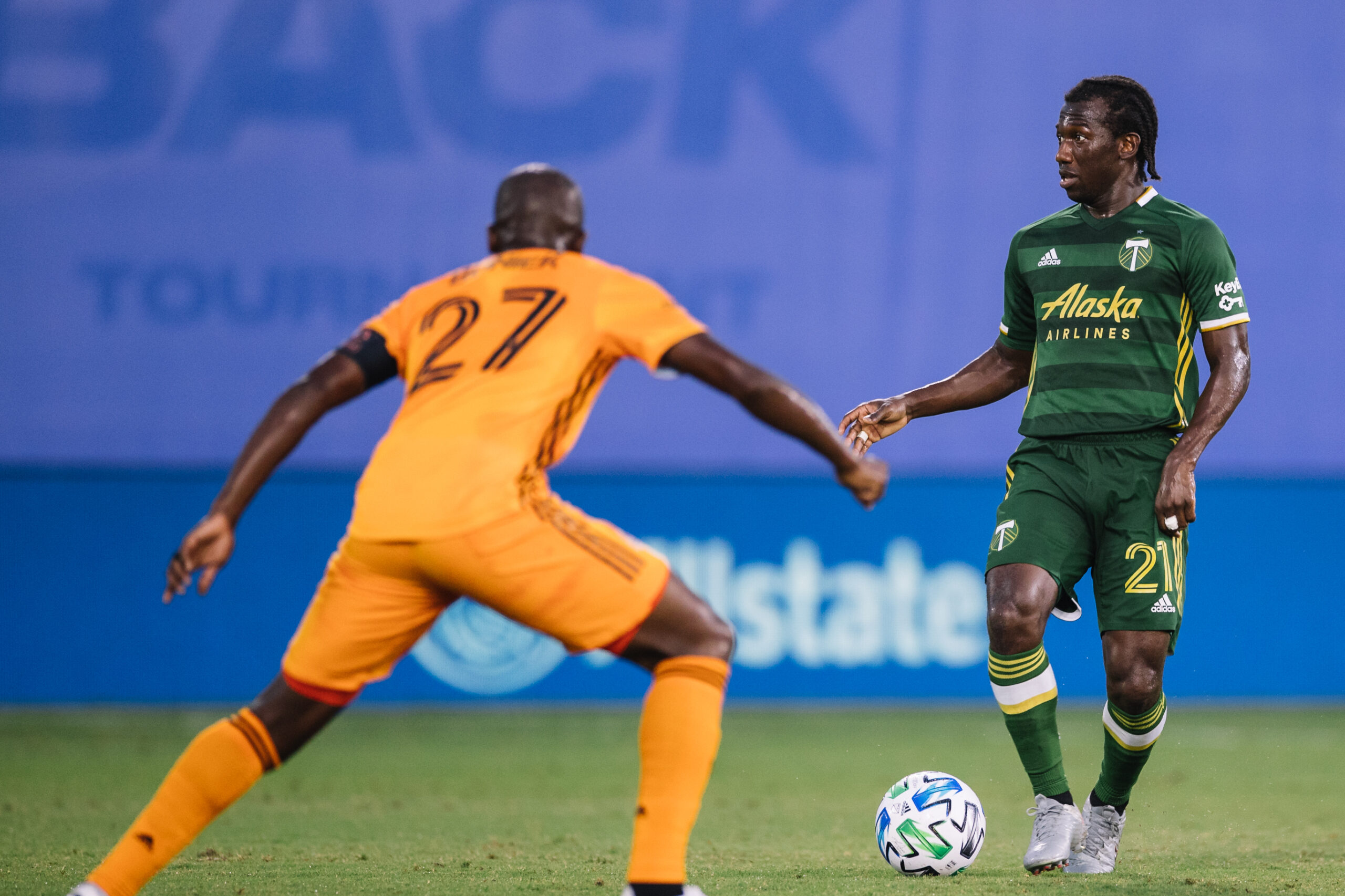
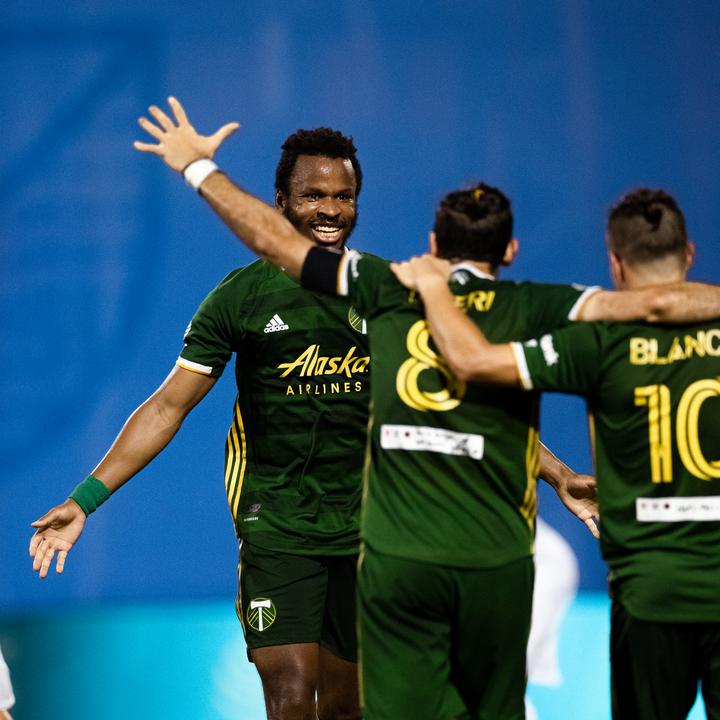
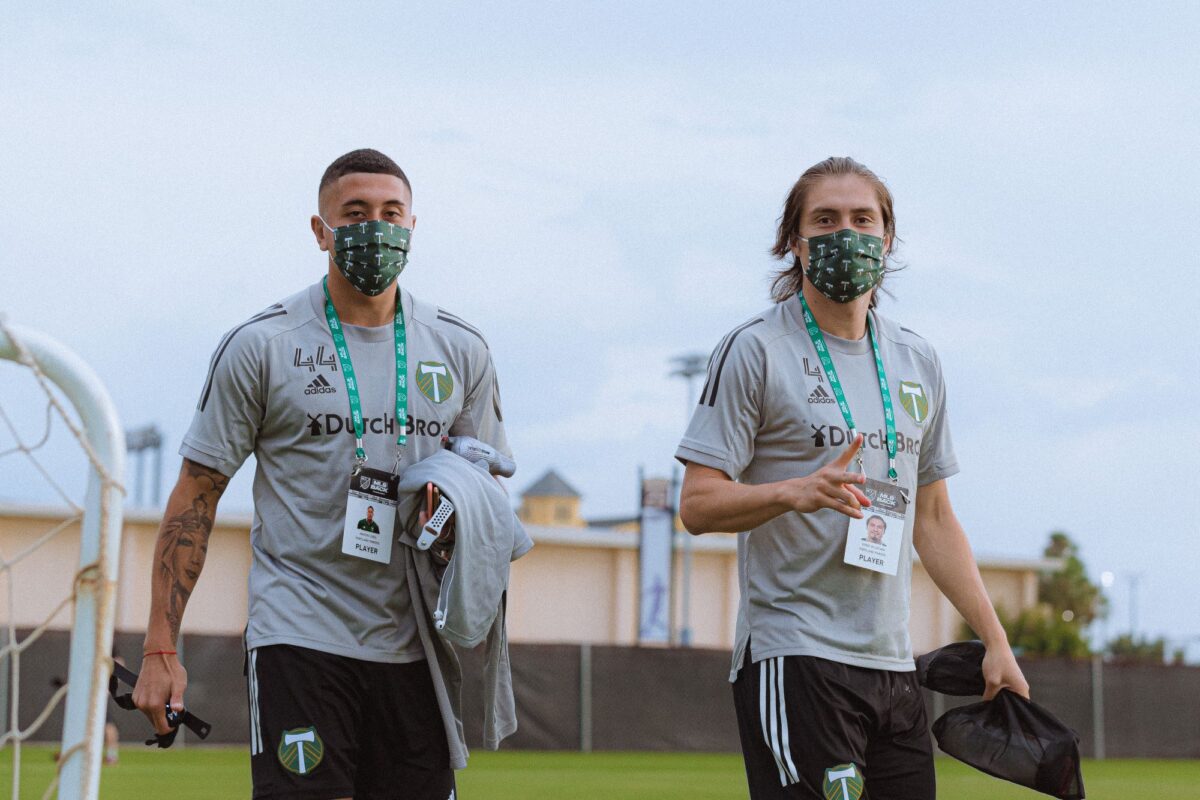
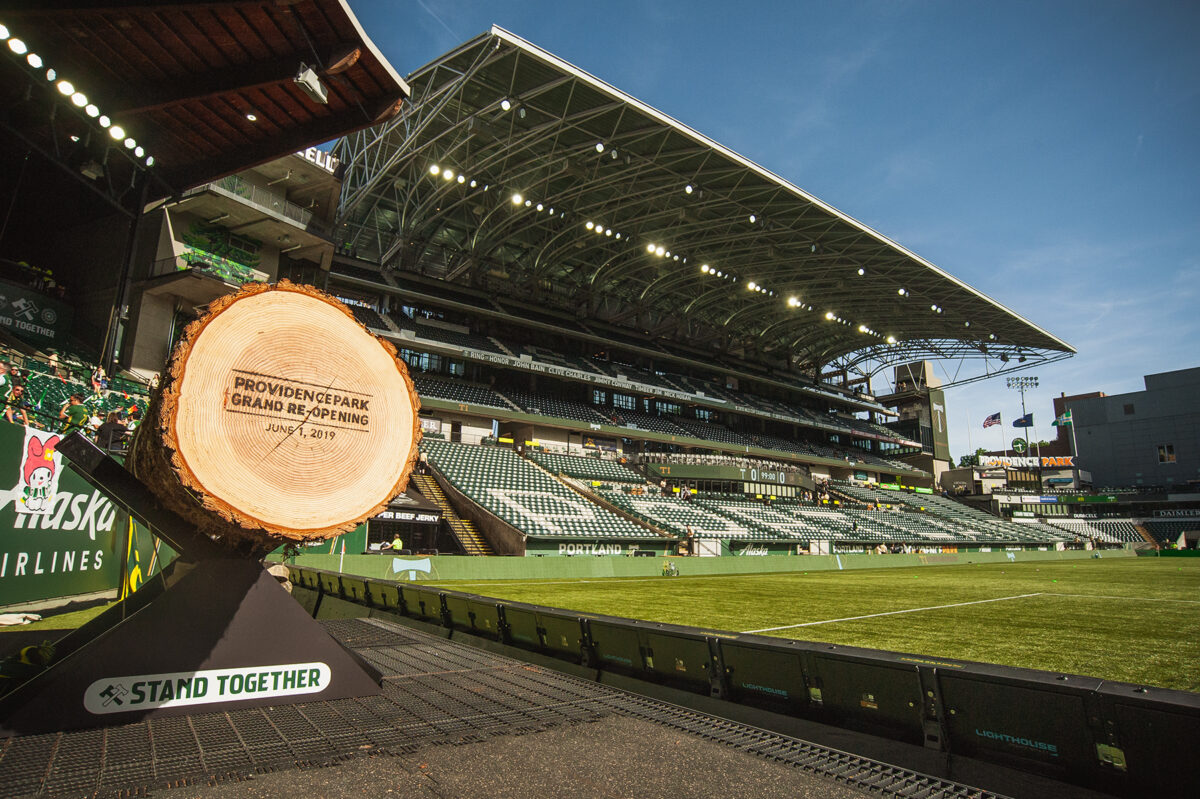
June 9, 2011 was a perfect day for soccer in the Midwest.
Almost a decade has passed since Sporting Kansas City christened then-Livestrong Sporting Park, but Rick Dressel, the team’s Director of Team Administration, recalls every detail perfectly.
He remembers watching The Cauldron come to life for the first time—the electric atmosphere as the temperature dropped and kickoff loomed. That night, a recorded 19,925 fans filled a stadium with an official capacity listed at 18,467. The final result—a 0–0 draw against the Chicago Fire—may not have been the most entertaining, but it’s a night that will always stick with him.
“That night compared to the night we won it all back in 2013, as far as the energy goes,” Dressel said. “It was a beautiful night, perfect soccer weather. The energy of the place, the players’ energy level, just everything was like a cup final. To do that for the first time—and we’ve experienced opening up stadiums before as a road team, and always have thought that was pretty cool—you can feel the electricity, and that night’s atmosphere is one I will never forget.”
In the 25-year history of Major League Soccer, just five teams—including Sporting—have started their seasons with at least eight consecutive road games. From lack of chemistry to inconsistent results, each team undoubtedly faced its struggles, but also developed a sense of camaraderie. To many in these organizations, the trips came to define much more than the current season; they defined a new era with a new stadium, oftentimes more exciting and fortuitous than the one it left behind.
Six games into their 2019 season, the Timbers were in trouble. Sitting on just one point nearly halfway through their twelve-game season-opening road trip, the team needed a spark.
Portland had opened the season with a 3–3 draw against the Colorado Rapids in what was one of the coldest regular-season games in league history. In that match, a late equalizer from Rapids rookie Andre Shinyashiki provided a preview of the rough weeks to come.
In their third game, the Timbers lost 3–0 to FC Cincinnati, one of the league’s worst teams at the time. In their fifth, Portland gifted the San Jose Earthquakes their first win of the season in another 3–0 defeat.
Shortly after their loss at Avaya Stadium, Portland held a team meeting.
“Once we had that reflection, some words were said, and some feelings were vested in that moment,” forward Jeremy Ebobisse said, “but we started to turn it around and played better together.”
“You know that the first five games of the year do not make or break your season,” goalkeeper Jeff Attinella said. “Obviously you want to get out to a good start, but I think the circumstances that we were in were beyond challenging when you’re thinking about coming off a Cup final.”
The team seemed to find a spark of momentum in Frisco, Texas the next game. A controversial handball called in the 95th minute denied the Timbers a late point against FC Dallas, but the result gave players a bit of hope. The next week, the Timbers picked up their first win of the season, beating the Columbus Crew 3–1 at Mapfre Stadium.
“When they scored early in that game in Columbus to go up 1–0, you could just feel the team loosen up, because they hadn’t scored first in any game that year,” Timbers TV play-by-play announcer, Jake Zivin, said. “Columbus had some good chances in the first 30 minutes, and you don’t want there to be that feeling of ‘here we go again.’ Then they score and you could sense the mood rise. From then on it was like, ‘Okay, they’re back. This is what we’re used to from them.’”
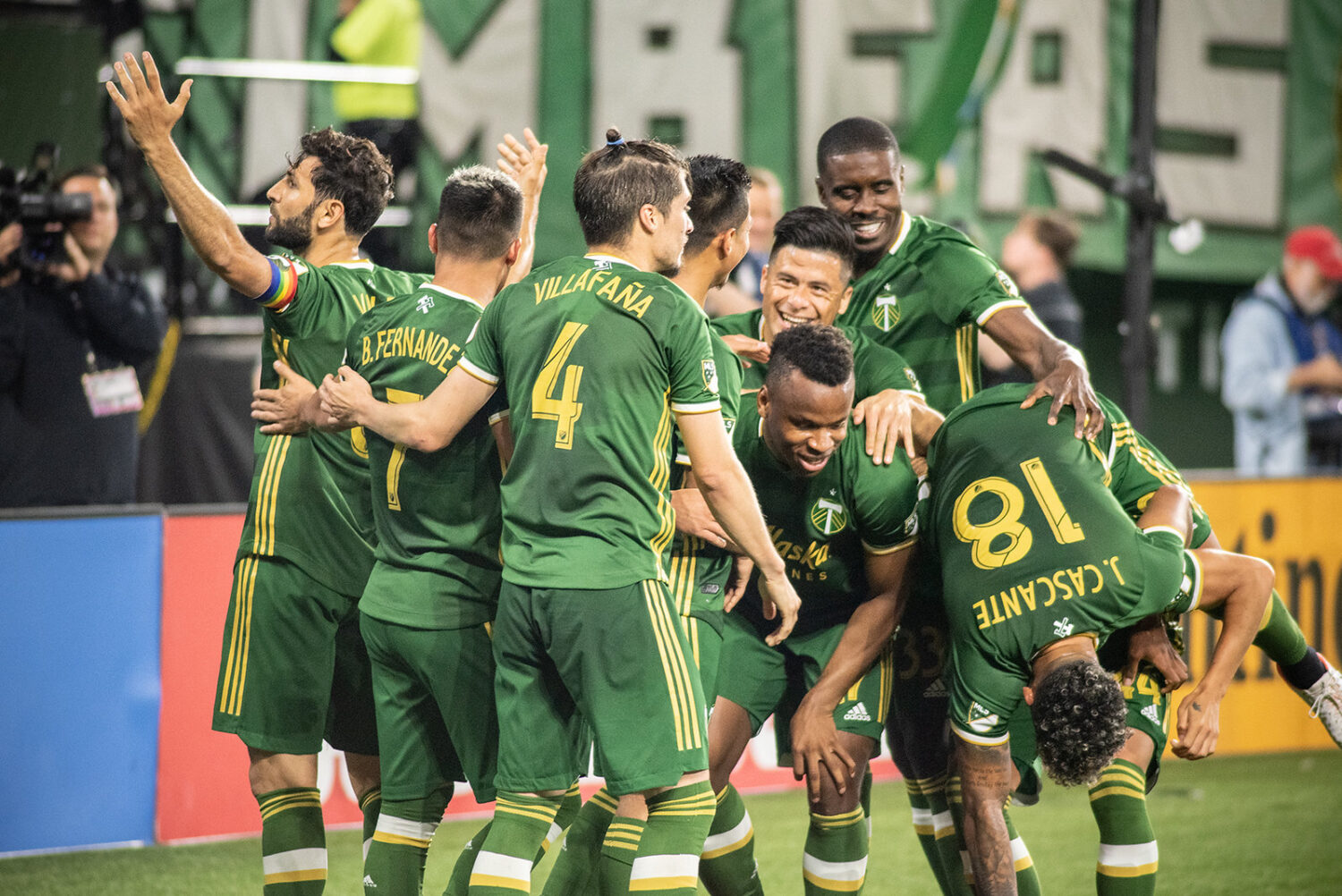
By the time the 12th and final game rolled around, the Timbers were sitting on 11 points. 90 minutes later, they would leave Chester, Pennsylvania with three more after defeating the Philadelphia Union 3–1. As summer—and a long homestand at newly renovated Providence Park—approached, the Timbers had just five road games remaining on their schedule.
“Given the adverse conditions, having the cross-country trip, that was a game we were willing to concede, but we came out flying and in good form,” Ebobisse said. “That was the end of our road stand as well, so we got over this massive hump, and that was a major boost for what was to come.”
If, in March of 2011, you had asked Callum Williams to point out Salt Lake City or San Jose on a map, you may have been met with a blank stare.
The 21-year-old broadcaster from Birmingham, England took a chance on American soccer when he traded his job with the BBC for a play-by-play broadcasting position with Sporting Kansas City. Just six days after landing in Kansas City for the first time, he was off to Los Angeles to cover the team’s first game of the season against Chivas USA.
Williams learned a lot about North America and its intricacies during that opening road trip. Vancouver, BC became one of his new favorite cities, and now he has family there. Williams estimated that he spent more time at Chicago’s Midway Airport than he did at his new home in Kansas City over the season’s first few months.
“I’ve never heard of Columbus, Ohio. I’ve certainly never heard of Denver, Colorado, and all these other places,” Williams said over Zoom. “For me, I relied a lot on adrenaline, and because I was so young and because I had such enthusiasm for the new challenge, it all went by in a flash, really.”
Necessary tasks like getting a Social Security number, viewing apartments, and obtaining a driver’s license took a back seat to jetting around the United States and calling games for a struggling Sporting side that couldn’t seem to find any positive momentum.
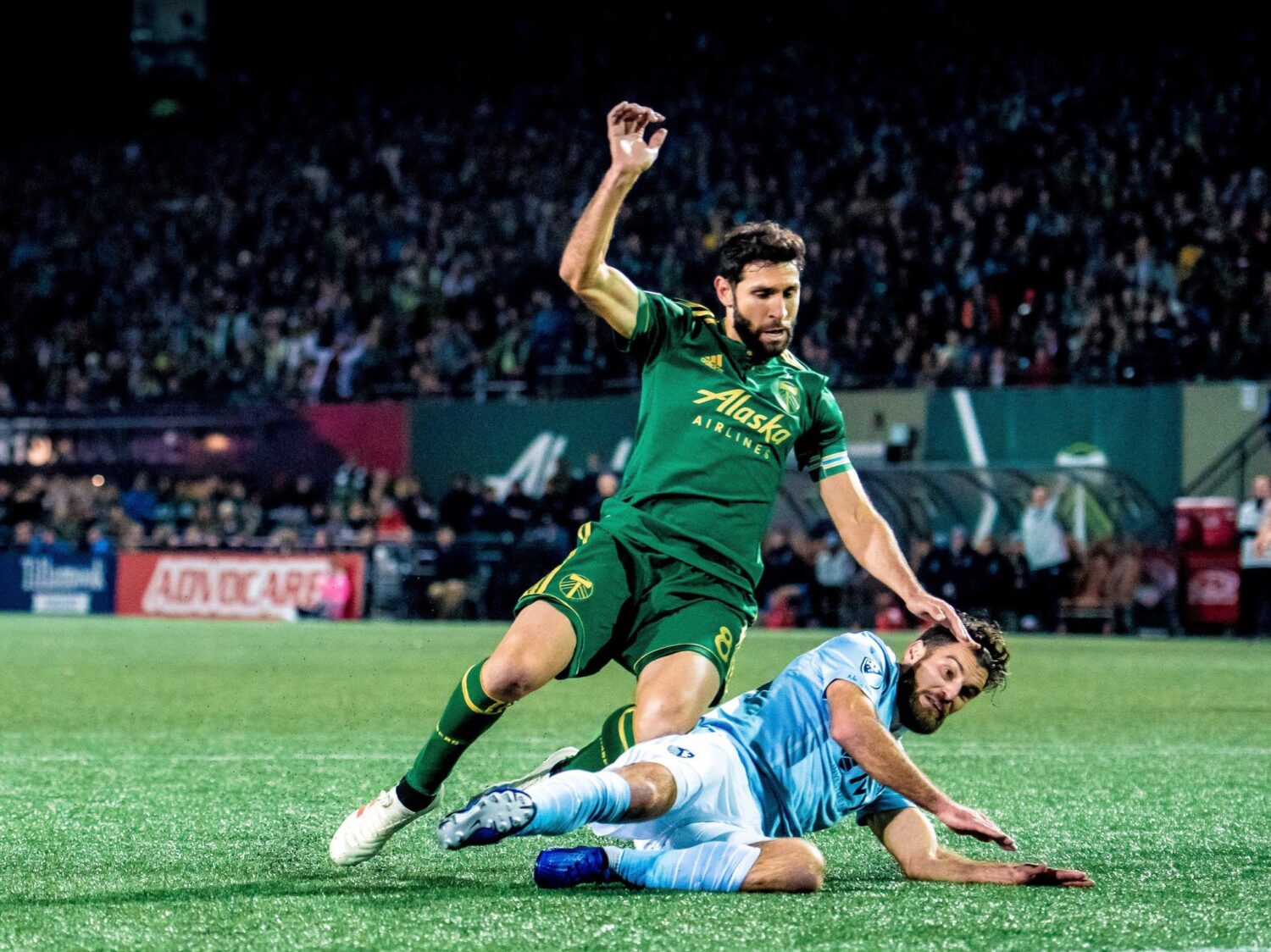
That season, Williams forged a solid working relationship with head coach Peter Vermes, who always took the time to talk to the young broadcaster and answer his questions.
Despite the criticism that Vermes received when his team sputtered out of the gate, Williams and Dressel both believe that he was a big reason as to why the team didn’t break early on.
“The way Peter coaches, he tends to have a really good group of guys because of the way he coaches and the way he expects everybody to put their chair in,” Dressel said. “We typically have really good players, so I can’t think of any challenging moments in that respect.”
Behind the leadership of Vermes, Sporting rallied in the second half of the season, making its way to the 2011 Western Conference Finals before eventually being eliminated by the Houston Dynamo.
Nick Hagglund arrived in Toronto to what appeared to be a team in transition. The tenth pick in the 2014 MLS SuperDraft draft would be joining a team that finished ninth in the East a season ago, but also one that just spent big money to land Jermain Defoe and Michael Bradley.
With just ten games remaining in Hagglund’s rookie season, the team fired head coach Ryan Nelsen and promoted its academy director, Greg Vanney, to the role. This all came with looming renovations to BMO Field, which would force Toronto to start the following two seasons with long road trips.
Vanney was keenly aware that spending long weeks away from home spelled potential disaster, but also figured that the trip could help the team build chemistry. Luckily for him, his second theory proved correct.
“For us, it felt like [the road trip] set a good foundation for the rest of the season, so that when we came into our form, we were defensively sound and we were able to play the soccer that we wanted to,” Hagglund said.
In Hagglund’s mind, there was no bigger reason for the team’s eventual upswing than Bradley’s leadership. Yes, the talent was there, with players like Sebastian Giovinco and Jozy Altidore, but many acknowledged that Bradley was the glue that held everything together. In many ways, he was TFC’s culture.
When asked to expand on Bradley’s influence, Hagglund brings up his first-ever MLS game against the Columbus Crew. Like any rookie would be, he was anxious, but Bradley soothed the 22-year-old’s nerves by telling him to relax, play simple, and find him. And that leadership wasn’t just displayed on the field.
“He cared about the whole organization,” Hagglund said. “It wasn’t just about the team. He cared about the organization from the top to the bottom, doing things the right way, and demanded those things to be done the right way. From how the field is to how families are taken care of, he truly embodied what the club was about.”
Luke Wileman, who often calls TFC’s games for Canada’s The Sports Network, spent a lot of time around the team during those seasons. He believes that Toronto’s 2017 treble-winning team would not have been possible without the culture and work ethic that Bradley set back in 2015.
“You need leaders in those situations, and I think one of the reasons TFC has been so successful is because of the change in culture, expectation, and leadership that Michael Bradley brought when he originally came in,” Wileman said. “It’s those kinds of leaders that you need to build that culture. Michael Bradley is invaluable in terms of setting the standard and holding players accountable. That was a key for TFC.”

According to those who spent time around the four teams, the importance of having a leader on these long road trips cannot be understated. Yet, while DC United had veterans, the abundance of younger players made the team’s 14-game opening road trip in 2018 all the more unique.
United played 12 of their first 14 games on the road, but their two home games came at the Naval Academy in Annapolis, Maryland, and 4,000-seat Maryland SoccerPlex, respectively. When the team began to play at Audi Field, many within the organization still joked that they still felt as if they were going to National Airport.
“You don’t think that in a few months, in the heat of summer, Wayne Rooney is coming, but you knew what was coming at the end of the summer in Audi Field, a new stadium. You’re just going to get energy from that,” DC United play-by-play voice, Dave Johnson, said.
The young core of players bought into that idea. They knew going into the season that the trip wouldn’t be easy, but they committed to growing together as a team, and by the end of the season it paid off.
By the end of the road trip, whether it was seven weeks or 14, every team expected to come home to either a brand-new or renovated stadium for a lengthy homestand. While these opening road trips seemed to drag on, there was always a light at the end of the tunnel.
Hours before Toronto FC’s first game at freshly renovated BMO Field, the organization held a grand reopening ceremony to celebrate a project years in the making. Vanney, Mayor John Tory, and then-Maple Leaf Sports and Entertainment president Tim Leiweke were among those in attendance to usher in a new era of soccer in Canada’s biggest city.
The sun shone down in Toronto, and the mood couldn’t have been better. With the team returning home on eleven points, there was plenty of optimism around the organization. With a new roof in place and expanded capacity, the team finally had a home that matched its ambitions.
“When the team signed Defoe and Bradley, [Leiweke’s] big thing was, ‘Why can’t we be great?’” Wileman said. “‘TFC has had all these things go wrong, but why can’t we be great? Two years later, they make the playoffs for the first time, they have Altidore, Bradley, and Giovinco in. Now they are opening up this stadium that looks so much better than it used to.”
“Seeing the stadium for the first time, it was like ‘Wow,’” Hagglund said. “This is a true football stadium. This is going to be packed. You’re going to live for the darkest nights where it is rainy, where it is cold, and the lights are on with the place packed and ready for big games.”
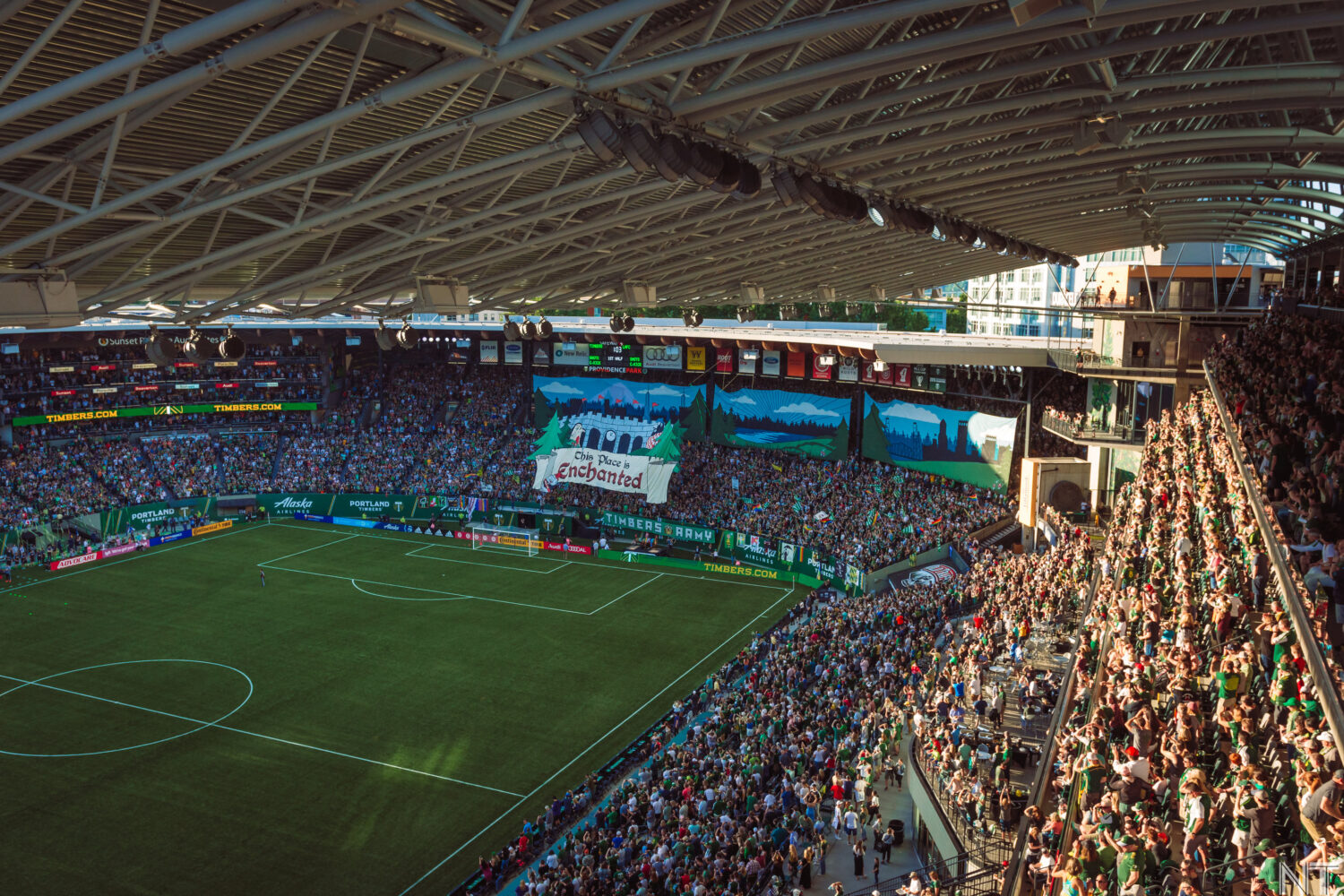
In DC, opening night at Audi Field felt just as surreal, but for a completely different reason. If you were to have told Johnson, who started calling the team’s games back in 1996, that he would be covering the club in a brand new venue in the heart of Washington, DC, he might have laughed. This was Washington, after all, where politics and bureaucracy often make it impossible to land a downtown stadium. Johnson brought up past examples in which local professional teams tried and ended up with stadiums in Landover, Maryland.
Little did he know that 24 years later, Wayne Rooney would be suiting up for United the same summer that sporting excitement in the city was reaching all-time highs. It was a far cry from past seasons of playing at a run-down RFK stadium, to say the least.
“There’s no lightning in a bottle story here,” Johnson said. “Soccer has been laid down for fifty years. In Washington, DC, go look at 1980, when Johann Cruyff played with the Diplomats. They averaged 20,000 fans a game. Look at what Portland did, or what Seattle did in the old NASL. All of this doesn’t just happen overnight. People grow up with the sport, and that’s why you reach your position now.”
When asked to look back and reflect on whether or not the road trips and the hassle were worth it, nearly everybody took a moment to collect their thoughts. At the end of the day, nothing compared to the feeling of coming home: the packed stadiums, the unique energy, the chance to be there for a unique moment in franchise history.
“This stadium changed absolutely everything in [Kansas City], and I think that leading up to the stadium, it’s a story that doesn’t often go told honestly,” Williams said. “A lot of people weren’t really fans at the time, or only started following it when the stadium was built. It was a period of adjustments, a stage of a lot of those players’ lives where they had to prove they could play at this level as well. It was a fascinating introduction to the world of Major League Soccer, and it was a stage of my life that I will never forget.”

Players have been tested, teams are beginning to filter into Orlando, and we are just over a week away from kickoff of the MLS is Back Tournament.
Nearly four months have elapsed since LAFC and the Philadelphia Union played to a 3-3 draw back in early March. And before Inter Miami and Orlando City take to the field, Rose City Review talked to Joe Lowery—who currently co-hosts the MLS Assist Podcast—about the Timbers’ potent attack, defensive question marks, and the many ways in which they could create chaos in Orlando.
(The conversation below has been edited for clarity and length)
Kyle Pinnell: It’s been about a week since the draw. What were your initial thoughts on Group F, and more specifically, the Portland Timbers?
Joe Lowery: It’s going to be really interesting in terms of the on-field stuff, right? It’s going to be interesting to see how teams take things and how coaches want to approach the group stage which is actually worth points long term. There are a lot of questions as far as that goes, but looking specifically at Group F, there are a lot of unknowns in that group, I think.
You have LAFC, and we kind of know what we are going to get from them, although it will be interesting with the addition of Andy Najar to see how that is going to change things if he gets minutes. With the Timbers, Houston, and the Galaxy, to be honest with you, those teams all have large question marks around them.
The Timbers, I don’t think they defended well. Their defensive block, which is really really important to how they want to play, wasn’t very solid. The Galaxy are still trying to figure out how to attack with Chicharito and Cristian Pavón, and then the Houston Dynamo are right in this revamp under Tab Ramos, and they’ve only had two games to sort that out—those games were without Alberth Elis. We don’t really know what the Dynamo look like, we know what the Timbers want to be, and we know what the Galaxy want to be, but they aren’t there yet either. There are a lot of unknowns, especially after LAFC, in that group.
Pinnell: Yeah. We know how the Timbers want to play, they want to press and play a beautiful style of soccer, but that has turned into counter-attacking, playing long balls over the top, and hoping for interesting results. Over the first few games of the season, what have you seen when you watched the Timbers?
Lowery: With the Timbers, it’s interesting to me because every coach says that they are going to play with the ball, every coach wants to have the ball for the most part. The Timbers, in a way, still have the pieces to do that. They have two of the highest skilled on-ball players in the league with [Diego] Valeri and Sebastián Blanco. You think about having those two guys as attacking midfielders in a possession scheme, that sounds pretty nice, I love that idea. You have Diego Chará who is nice on the ball as well and he can do things in possession as a number six.
They have options here in certain spots, but not all the way around, and I think that is the problem here. They have guys along the backline, specifically center backs, that I don’t think are great with the ball. I’ll have to watch them more, but they never stood out to me as being these offensive powerhouses, which makes it difficult to keep possession a lot of the time.
Whether it’s the center backs or it is the fullbacks or the team not having that cohesion in possession, so often I think they revert to what seems to be their DNA for one reason or another. That’s sit in a defensive pocket, press occasionally, and then win the ball and have Diego Valeri and Sebastian Blanco be the playmakers on the fast break. They can do more things than that. They can hold the ball and play through those guys in possession, but for some reason, they seem to continue to go back to that counter-attacking style, which is fine, it’s a totally viable approach, it just seems like they are lacking a little bit in terms of their tactical identity with the ball on the field.
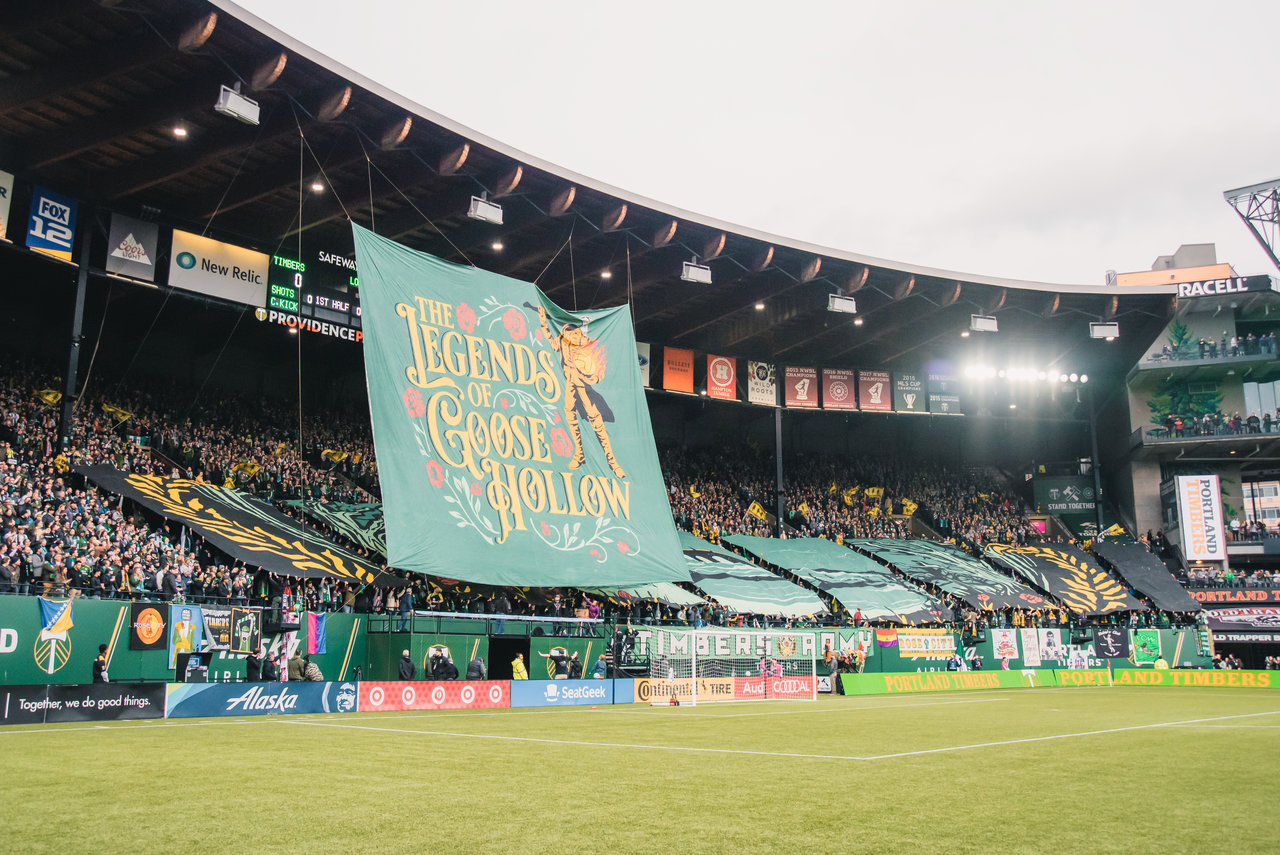
Pinnell: Going back to what you’ve seen out of the Timbers, when you watch them in Orlando, what will you have to see change to make it seem like the team is going in the right direction or that you’re seeing positive change?
Lowery: I think with the Timbers, seeing them shore up their defensive block would be big. Because I don’t think they’re ever going to be the team that has the ball for 60 percent of the game, or at least not in most games. When you’re not that team, your defensive block is really important because you’re playing against the ball for a lot of the game.
Going back to LAFC as an example, imagining a matchup between those two teams on the field, right now I don’t have a lot of confidence in the Timbers’ defensive shape to be able to contain a possessive team like that. But if they come in, they understand their roles in a defensive block—if they’re in a 4-4-2 or 4-5-1, whatever it is—they understand their assignments, where they need to be, and how they’re going to shift to deny penetration and force the ball wide if that’s what [head coach] Gio [Savarese] wants to do. They’re going to need to know when to trap, when not to trap, and when to step versus when not to step. If they can work that out, and if they have worked that out in this last three-month break, that’s going to be a great asset for them. That takes the Timbers from being a bad team in my mind to being a dangerous team that you don’t really want to play.
Pinnell: Looking at Diego Chará, he sometimes drops into the backline to help the team build possession and carry the ball into the midfield. How do you see the Timbers getting the ball from the backline, which you’ve said yourself doesn’t have any players excel at playing out of the back, into the midfield where they can be more dangerous?
Lowery: Having [Diego] Chará drop a little bit is a look that I actually really like with the Timbers. Maybe it’s Valeri, maybe it’s Blanco, maybe it’s Paredes dropping in a little bit; it allows the midfielders to get touches on the ball and distribute, which I appreciate. You just find the balance with that because you also want Valeri and Blanco higher up the field as well. Maybe you bring one of them down deeper into midfielder and you have the other one staying a little higher, that’s fine. I like that rotation with [Diego] Chará dropping from his six spot in between the center backs, moving the center backs out wide, pushing the full backs a little higher, and then you have Valeri and Blanco in those interior channels or in the middle of the field.
Then you have Yimmi Chará or whoever else is playing up front, that allows you to get those guys touches off of passes from Valeri and Blanco. Moving [Diego] Chará deeper I actually think is a pretty sustainable and successful look for the Timbers.
Pinnell: Now, when you observe the roster as a whole, who are some important players that you will be keeping an eye on?
Lowery: I want to see if/when/where Jeremy Ebobisse plays. I don’t think anybody really knows where he is going to play. I think that he should play as a [No.] 9 or as part of a front two, but that can be difficult with needing to give Valeri some touches up top, or how do you defend as part of a front line in a defensive block. I want to see where Ebobisse factors in, because I think he has something to bring to the table that he hasn’t had the chance to show for the Timbers.
Outside of that, I want to see more from Paredes as well in midfield. He’s a guy who is the unsung hero of that midfield in a lot of ways. [Diego] Chará gets a lot of headlines, and then Valeri and Blanco get the rest, so it’s a little challenging to know exactly what impact he’s going to have in this tournament. I like him as a player; I want to see more of him and focus on him more in that Timbers midfield. So Ebobisse and Paredes are the two guys for me that I am curious to watch with a more analytical eye on this tournament.
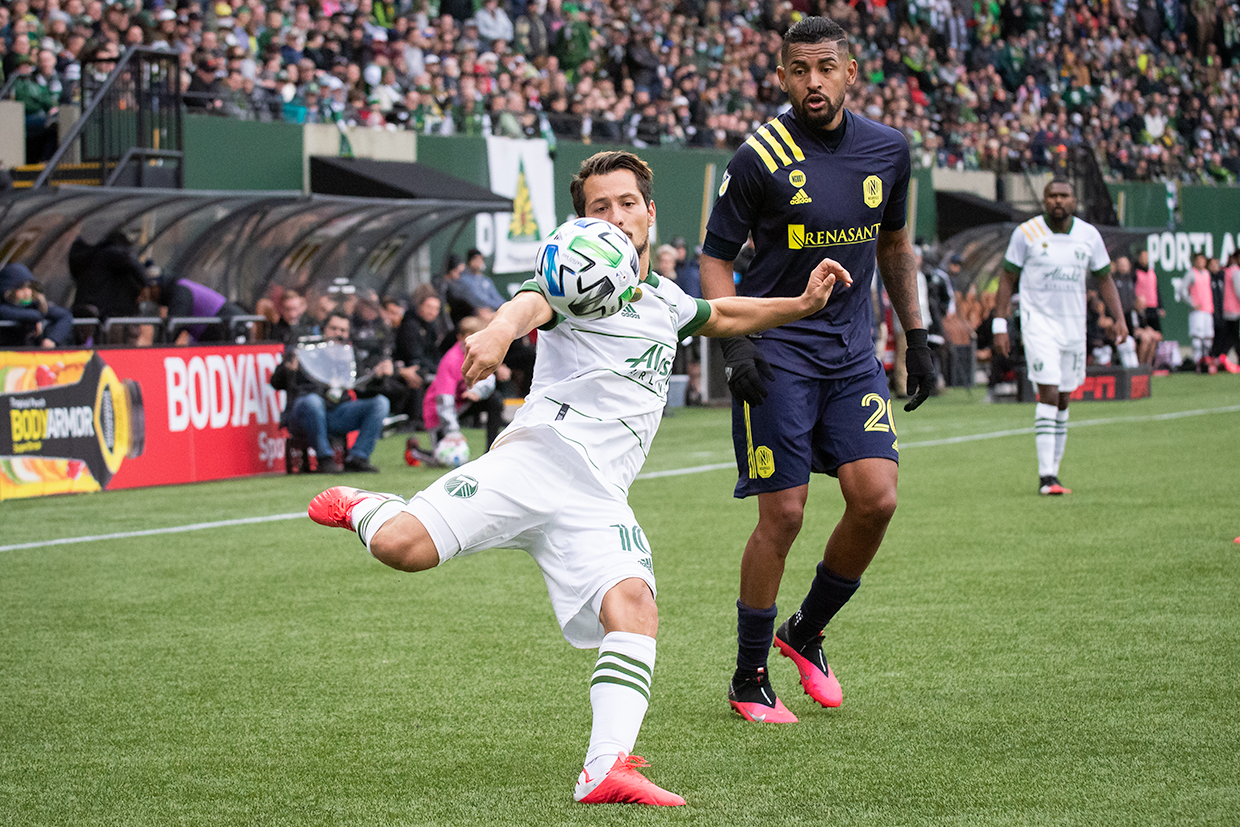
Pinnell: We started our conversation by talking about Group F as a whole, and honestly, the two teams that advance from the group could be a toss-up. With every team having questions, it might come down to which team has the most tactically adept coach who can tinker enough to find that formula to get them through the group. What coach do you think gives his team a distinct advantage for that second spot?
Lowery: So far, Barros Schelotto has been very predictable with how he plays, getting crosses into the box early and often throughout games. I think that unless we have a come-to-Jesus moment there with Barros Schelotto, then we’re going to see the same thing which is fairly predictable in a lot of ways.
Tab Ramos, I just straight up don’t know. Houston’s roster I don’t think is as talented as the Galaxy’s, maybe more similar to the Timbers in that regard. And with Gio Savarese, they’ve got the MLS Cup appearance, sure, but I’m not necessarily convinced that the Timbers are the finished product right now either. I’m not sure whether one coach has the tactical edge over another, to be quite honest with you.
Outside of Bob Bradley—I think he’s the number one guy in this group if we’re looking at just coaches. In terms of talent, though, if the Galaxy don’t advance from this group, and they actually try because we don’t know how the on-field quality is going to be, with Cristian Pavon especially—who I think is right up there with Carlos Vela in terms of best player in MLS, I think we’ll see that if we get a season this year—if they don’t make it out of this group, that’s going to be a little more unfortunate for them than it is for the Timbers or Dynamo. But as far as coaches go, I think it’s pretty even.
Pinnell: I agree, Bob Bradley definitely seems to be a level above most other coaches in this league. In an article that I recently published, I mentioned how the Timbers might be able to exploit space between lines. In a tournament like this, how do you think that the team could create that space?
Lowery: I think first of all that LAFC and Houston will open themselves up, which is good for a team like Portland because they want to attack into that open space. Looking at the Galaxy, that’s a different question. A lot of times they are going to get forward just because of the roster they have. They have the attacking talent, so it would be ridiculous for them not to get forward.
Still though, the Galaxy don’t play the same way that LAFC do or that Tab Ramos wants to do with Houston. So against a team like the Galaxy, they’re going to have to have possession a little bit more. They’re going to have to rely on their playmakers to get balls in from the backline or from Diego Chará, and then allow Diego Valeri’s off-ball movement, which is very very good, and have that captain them to better possession results. They have the tools in possession, and in the attack especially.
Getting the ball to Diego Valeri is one thing, but once they get the ball there, if they can get the ball there, then you are really cooking with something. If Valeri and Blanco can get on the ball in dangerous spots and get the ball to those spots in the first place, then the Timbers can pose a real threat with the ball against a team like LA. Creating and exploiting space in possession is going to be the thing for them, and I really do think that it comes down to how well their playmakers can get into spots and then distribute from there.
The rest of our conversation with Lowery is available in audio format for our $10 Patrons. You can find it under the “Patreon” tab on our website.
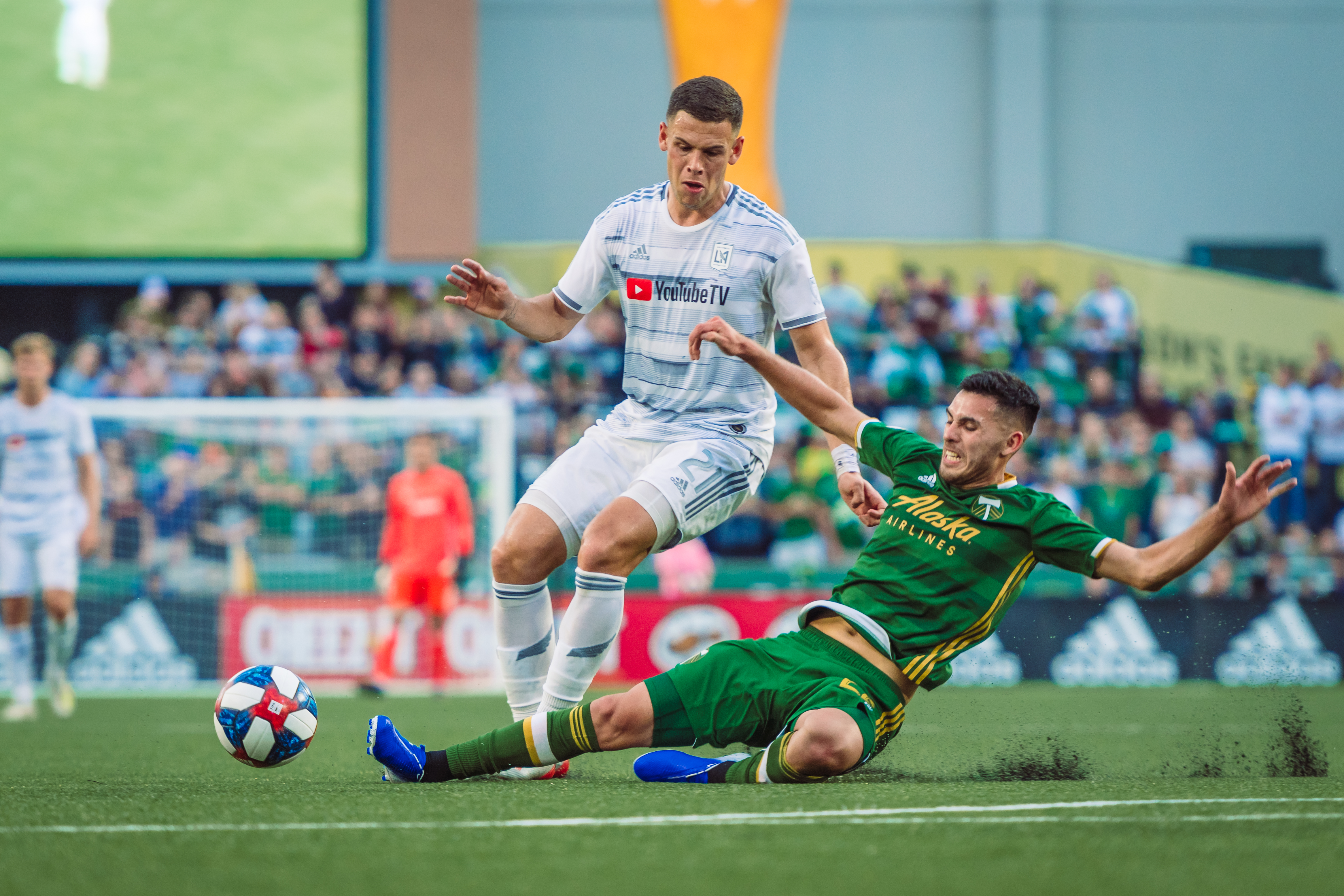
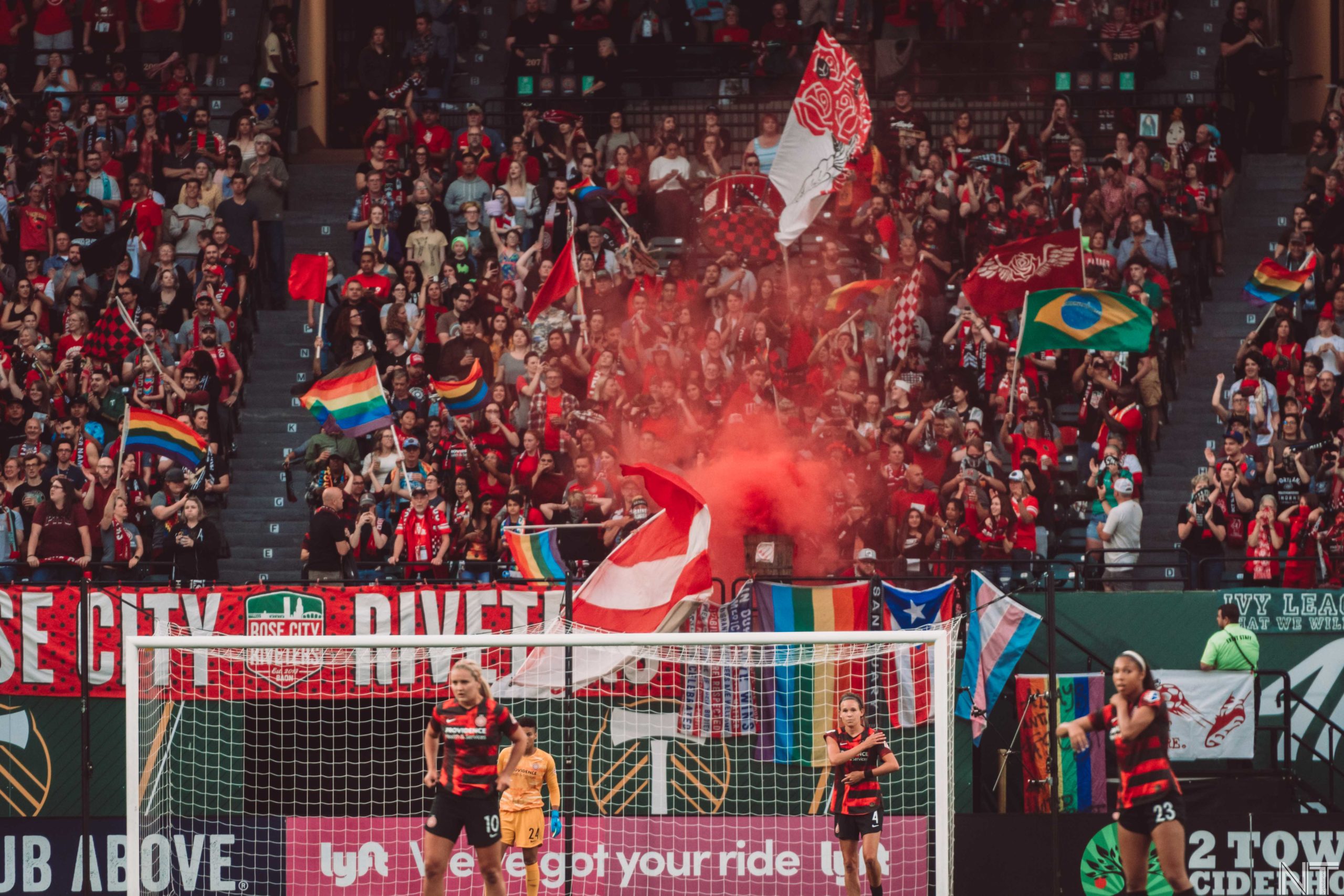
The Portland Timbers and Thorns are getting closer to playing real soccer games, and you have questions.
First off—and most importantly—as we’ve echoed through writing, Twitter, and The Rosette, soccer is just a game. Now is the time to be paying attention and educating yourself on this vital moment in our country’s history.
However, soccer does still exist, and as the weeks go by, we are inching closer to the return of the sport in North America. The NWSL Challenge Cup will kick things off in late June, followed by the resumption of Major League Soccer in July.
In this week’s Q&A feature, we answered questions ranging from our thoughts on the restart to our all-time favorite PTFC post. This article highlights some of the questions that were asked. If you are interested, the complete conversation can be found in our Discord, available to Patreon subscribers at the $5 and $10 levels. Subscribing also gives you the opportunity to participate in future Q&As. Without further ado, let’s get to it!
Some questions and answers have been edited for clarity.